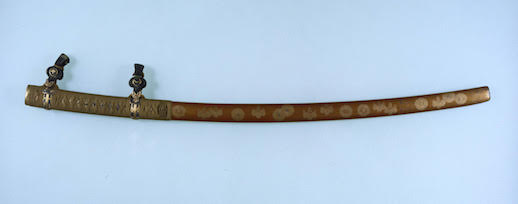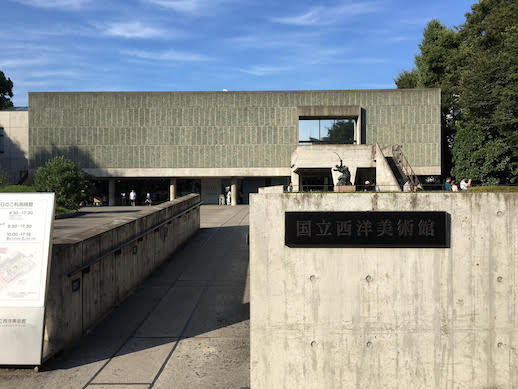Joshibi Favorites
Japanese Swords at Tokyo National Museum
Tokyo’s Ueno neighborhood is full of interesting art museums like the Tokyo National Museum, which opened in 1872 and boasts the title of oldest museum in Japan. Displays at the fifth World Exhibition, held in Vienna in 1873, are considered influential to the museum’s beginnings.
The scale of Tokyo National Museum is considerable. There are five exhibition halls: The Main Hall, the Oriental Art Hall, the Temporary Exhibition Hall, the Heiseikan, and a gallery of Hiryuji Treasures from Nara. Tokyo National Museum holds approximately 117,000 artefacts from various period and genres, but it is not only art that is on display––you can also examine archaeological treasures from Japan and other Asian countries.

The Tokyo National Museum collection includes Japanese swords. There are always about 40 swords on display. These special weapons are made from a kind of steel called tamahagane and can be divided into different types according to size and shape. Once used by samurai, they have become symbols of the warriors. The decorations are thought of as the most valuable parts of the swords, so it is common for only the blade to be exhibited at Japanese museums. This thinking is characteristic of Japanese values and not something typically seen at exhibitions of swords abroad.
Each sword is inscribed with a unique mark known as the sanjo. Titles and names are not usually given to swords, however there is one at Tokyo National Museum that has been given the nickname Mikazuki Munechika. It was made by the swordsmith Sanjo Munechika around the latter half of the 10th century or the early 11th century. This type of sword is known as a tachi, which are about 80 centimeters in length. Not only is the it designated as a National Treasure, it was selected as one of the Tenka-goken, or “five best swords under heaven.” It is a particularly excellent example of Japanese swordsmithing.
Mikazuki Munechika is famous for being a beautiful sword. There are many reasons why it is said to be beautiful, but one reason is the blade pattern. Japanese swords have patterns engraved along the blade that are created as the blade takes shape. You can see different patterns on different swords, an art form Japanese people have enjoyed for centuries.
The blade pattern that runs along the Mikazuki Munechika looks like a crescent moon, and the nickname comes from this pattern. Because the blade shines and reflects the light, it resembles a real moon. Other motifs include waves and straight lines. A recent online game called Touken Ranbu features this sword. When it was announced that it was to be exhibited at the Tokyo National Museum, the Mikazuki drew a new group of visitors.
There are many Japanese swords designated as National Treasures and Important Cultural Properties at Tokyo National Museum besides Mikazuki Munechika. You can also see other kinds of traditional Japanese weapons and armor that teach us about Japan’s ancient symbols and spirit.
Minori Nakai is a student of Joshibi University of Art and Design. She is studying art and culture and is interested in traditional Japanese and Chinese art.
*Tokyo National Museum is also showing Secrets of Screen Paintings: Wind God and Thunder God and Flowering Plants of Summer and Autumn through March 24, 2019.

Paul Signac at the National Museum of Western Art, Tokyo
Located near Ueno Station, the National Museum of Western Art, Tokyo was established to display the Matsukata Collection and first opened in 1959. Designed by the celebrated Swiss-French architect Le Corbusier, the museum was granted the status of World Heritage Site in 2016.
One of the most distinctive attractions on view is the Matsukata Collection itself, which brings together a group of Western paintings and sculptures assembled from across Europe between 1916 and 1932 by Kojiro Matsukata, the president of a Kawasaki shipyard. After World War II, this collection was acquired by the French government under the San Francisco Peace Treaty. At the time of signing, Japanese Prime Minister Shigeru Yoshida requested that the French Foreign Minister consider how the collection might be returned. As a condition for its return, the French politicians requested the establishment of a museum of French art in Tokyo. Measures to create a new museum on the Ueno Park premises were approved by the Cabinet in 1954, and this site became the National Museum of Western Art, Tokyo.
One of the reasons the Matsukata Collection is so highly valued is that it contains a wealth of artworks by important Western artists from various historical eras. The total number of is around 5,500 pieces. Among the most popular are the Water Lillies paintings by Impressionist Claude Monet. Perhaps a lesser-known Modernist painting, however, is The Port of Saint-Tropez (1901-1902) by Paul Signac. This artwork depicts the beautiful gradation of the sky in a morning glow. In the harbor of a port, there is a yacht and people gathered. Navy blue and dark tones contrast with the bright daytime sky.
Paul Signac was a French Neo-Impressionist. He studied architecture at first, but later decided to become an artist after seeing Monet’s work. He was a founding member of the Independent Exhibition alongside Arberto Dubois Pillet, Odilion Redon, and Georges Seurat. This exhibition had no judges or award, but anyone could exhibit if they paid a membership fee. This society of artists was established in opposition to the conservatively judged Paris Salon.
Signac was influenced by another famous Post-Impressionist, Georges Seurat, whose work was informed by the scientist Michel Eugène Chevreul. Seurat divided the spectrum into six basic colors of red, orange, yellow, green, blue, and purple and then painted artworks using the contrast of complementary colors. Signac met both Monet and Seurat in 1884, but was most struck by Seurat’s color theory and his systematic method. When Seurat died in 1881, Signac was travelling around the Mediterranean by yacht. On this journey, he found the small fishing port of Saint-Tropez.
When compared, Signac’s application of paint is more uniform than Seurat’s brushstrokes. Even enlarged as a print, the painting’s colors remained vibrant. It is colorful, strong, and energizing, emphasizing the contrast of individual colors more than methods of blending. The Port of Saint-Tropez is also important as a departure from Neo-Impressionism to Fauvism. The National Museum of Western Art is one of the few Tokyo art museums to hold Signac’s work, and The Port of Saint-Tropez makes it well worth visiting.
Yu Endo is a student of Joshibi University of Art and Design. She learns about colour, art and culture. She is especially interested in traditional Japanese palettes.
*The National Museum of Western Art is also showing Hayashi Tadamasa: The Paris Art Dealer Who Promoted Japonisme and Le Corbusier and the Age of Purism through May 19.
Joshibi University Art Writers
Joshibi University Art Writers


